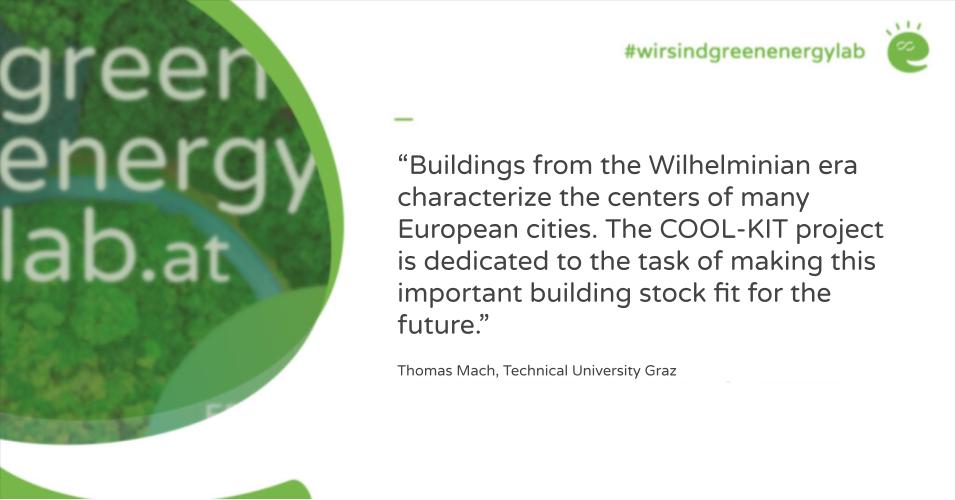COOL-KIT
Modular solutions for the integration of cooling in buildings of the founders' period (Gründerzeit)
Buildings of the founders’ period (built approx. between 1848 and 1918) and their typical block structures form a central backbone of Austrian cities. Within the city centres, about 30 % of the building stock consists of these urban structures. In Austria alone, more than 40,000 buildings of the founders’ period are in use, serving as homes for between 670,000 and 800,000 residents, depending on the method of calculation. Many features of the “founders’ period block” correspond to current urban development models, like “city of short distances”, “mixed-use city”, or the “compact city”. Nevertheless, the high degree of sealing burdens the summer microclimate and contributes to the formation of heat islands, not least because of the lack of greenery in the street space and the poor ventilation of the inner courtyards. Due to a lack of overarching approaches for the cooling of this important group of buildings, the current proliferation of inefficient individual cooling systems (mostly single split units) is increasingly becoming an energetic, acoustic and architectural burden.
Global energy consumption for space cooling has more than tripled between 1990 and 2016. Space cooling, usually provided by electricity-powered air conditioning, is rapidly increasing its contribution to the already high energy demand. Almost one fifth of all electricity consumed in buildings is actually used for cooling.
Objective of the COOL-KIT project
The aim of the project is to counteract the current proliferation of inefficient stand-alone cooling systems by developing cooling systems based on different heat sink options (ground, air, indirectly via microgrids) and different active cooling techniques and components (component activation, fan coil units, radiators). These and other measures intend to increase the efficiency of cooling in buildings from the founders’ period and thus minimise energy consumption and associated emissions.
Approach and methodology of the COOL-KIT project
In addition to the development of the cooling systems, passive approaches such as shading or night ventilation are also considered. Predictive control technology ensures optimal operation and the use of PV electricity and geothermal cooling aims for emission-free operation at best. System and operating concepts are developed taking into account synergies with heating operation. Chilled ceilings are used to reduce heating system temperatures to increase year-round efficiency and reduce temperature requirements e.g. for the district heating supply. Selected system configurations are implemented in several buildings of the participating universities. Predictive control approaches are tested with the help of a digital twin, based on an IoT platform and comprehensively evaluated in terms of energy technology, comfort, economy and ecology. The experience gained, simulation studies, as well as market and stakeholder analyses lead to a modularly structured bundle of interdisciplinary evaluated system solutions, the COOL-KIT.



